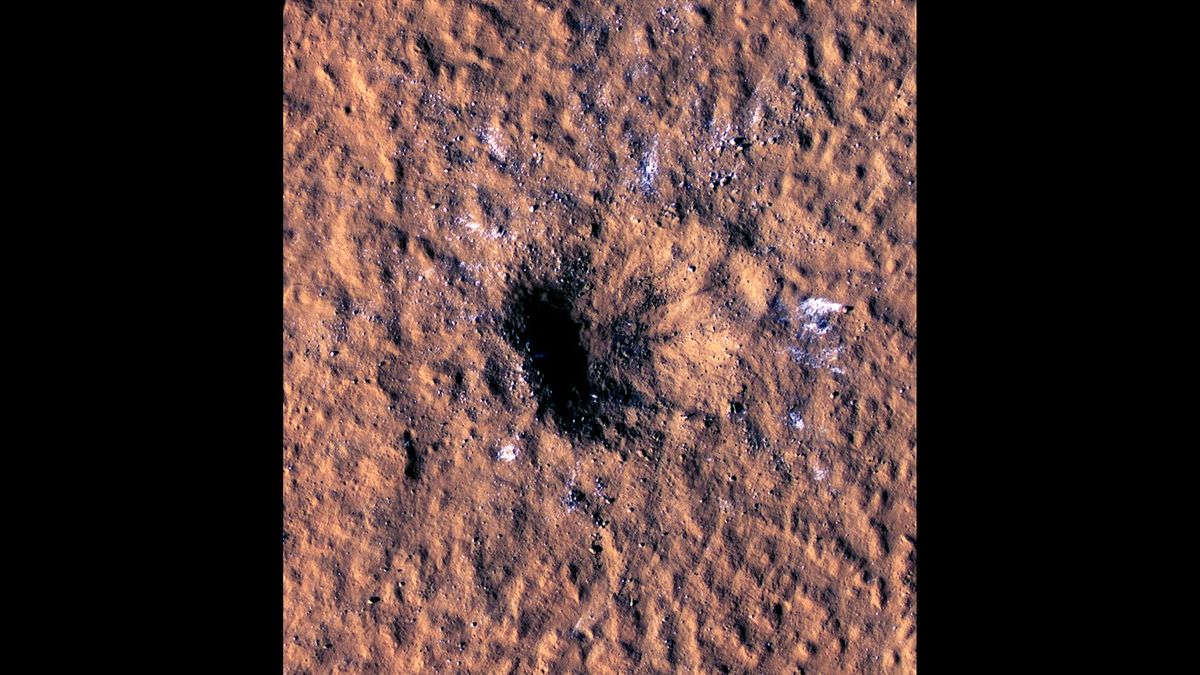On December 24, 2021, a magnitude 4 earthquake hit the Red Planet, triggering sensors on NASA’s Insight lander. Now scientists know exactly what caused the situation. Before and after images taken by NASA’s Mars Reconnaissance Orbiter confirmed that it was a meteorite impact – the largest ever recorded in the entire solar system.
The impact crater, which measures 492 feet (150 meters) across and 70 feet (21 meters) deep and is located near the Martian equator, is now offering scientists a rare look at the subsurface of Mars. What’s more, the boulder-sized chunks of ice that were dislodged and exposed by the impact represent the lowest altitude ice ever found on the planet. Details of the strike and the events that followed are described in two studies published in the journal Science on Thursday (October 27).
Although there are larger craters on the Red Planet, they formed long before NASA began exploring Mars 16 years ago, so there are no images or seismic data to explain their origin. This earthquake and crater is the largest collision with a meteorite ever recorded.
“The impact image was unlike any I had seen before, with a massive crater, exposed ice and a dramatic blast zone preserved in the Martian dust,” Liliya Poselovawho leads the orbital science and operations group at Malin Space Science Systems (MSSS) in San Diego, said in statement.
MSSS scientists visualized the crater for the first time on February 11, 2022, using two cameras mounted on the Mars Reconnaissance Orbiter. One of the cameras takes daily pictures of the entire planet, so scientists were able to look back at the daily pictures to find the area where the meteorite exploded. After finding it, they tied the impact to a 24-hour period and confirmed that the crater formed during the Dec. 24 earthquake.
According to NASA’s Jet Propulsion Laboratory (JPL), the meteoroid was so small — no more than 39 feet (12 meters) long — that it would have burned up completely in Earth’s atmosphere. Mars’ thinner atmosphere, only 1% of Earth’s density, was less of a deterrent.
Ground-level observations of the crater also revealed new information about the geological makeup of Mars, the researchers said.
“Shock events are very useful in seismology,” said Andrea Rajsic, a postdoctoral fellow at Curtin University in Australia and co-author of a paper detailing the impact. “This is a fantastic way to look into the inner structure of the Red Planet.”
The underground ice exposed in the crater and among the ejected debris is closer to the Martian equator than any previously observed sample of ice on the planet. This could be crucial for future missions to Mars, as it hints at a more extensive repository of subsurface ice than previously suspected, the researchers said.
According to JPL, astronauts who will one day visit the surface of Mars will need water for drinking, agriculture and rocket fuel. And now NASA knows that the icy reservoir extends to one of the warmest places on the planet – hopefully that will make things a little easier for future astronauts.
This article is first published on Source link
